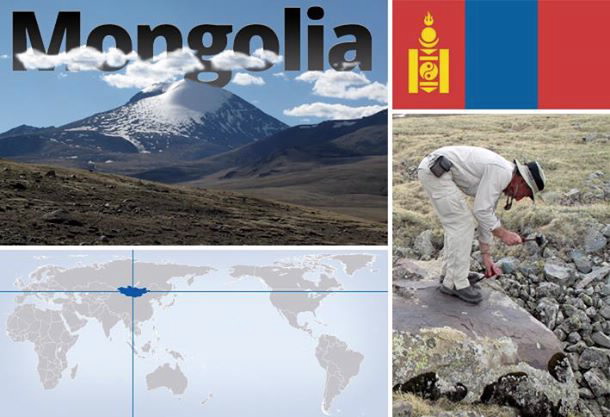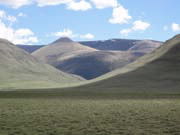A Quaternary geologist, a nuclear scientist and a geomorphologist walked up a mountain in Mongolia to collect rocks. But what sounds like the start of a joke, could lead to some of the most advanced understandings of past climate.
 |
Assisted by Mongolian PhD student Bataa Jigdjuresen from the University of Washington, the three researchers Professor Ari Matmon (Hebrew University , Jerusalem, Israel), Dr David Fink (ANSTO) and Professor Alan Gillespie (University of Washington, Seattle USA), who led the team, journeyed to one of the last climate science frontiers - Mongolia.
Their goal was to collect rock samples from the upper surface of boulders on moraines to reconstruct the journey of glaciers in the region.
In addition to their photogenic appearance, glaciers provide excellent records of past climate in mountainous regions. When climate cools during the ice ages, glaciers grow larger and extend further down-valley.
As the glacier advances, it erodes bedrock and valley walls, collecting and transporting boulders with it. During periods of warmer climate the glacier retreats depositing the boulders in piles at its margins. These piles of glacial rock debris are called moraines, a landform that marks timing and position of the last surge of cold climate.
Mongolia located in Central Asia is an ideal place to study glaciers and how they have responded to changes in global climate.
Unlike the glacial history of a place like New Zealand which is controlled by its ocean environment, Mongolia is heavily landlocked with a vast expanse crossing diverse topographic and climate regimes where glaciers in monsoon-affected Himalayas, or the dry deserts of Gobi responded differently to changes in global climate.
 |  |  |
| The recent opening of Mongolia to international research is offering scientists access to one of the most unique environments on the planet and an opportunity to gain a deeper understanding of our climate. | ||
It’s also a country that has only recently opened up to Western researchers after being under the control of the Soviet Union during the Cold War.
The team travelled twice to the central Asia collecting samples for dating from some of the most breathtaking regions in the world across the Gobi-Altai Mountains of Mongolia and the Quilian Shan Mountains of Tibet in the northern hemisphere summers of 2011 and 2013.
The samples then made their way from Mongolia via Hebrew University in Israel for processing before finally arriving at ANSTO, home of Australia’s nuclear expertise in Lucas Heights where they would be measured to establish the length of time since the boulders were released from their icy prison using Accelerator Mass Spectrometry(AMS).
According to Dr David Fink, who is a nuclear scientist at ANSTO’s Institute for Environmental Science, AMS is unique offering researchers the ability to determine the exposure age of surface rocks and sediments from a few thousand years to about 5 million years.
“In-situ cosmogenic radio-nuclide dating using Accelerator Mass Spectrometry to measure surface exposure ages of these moraines since glacier retreat has revolutionized our understanding of paleo-climate glaciations on the continental scale and of the polar ice caps,” he said.
 |
| Glacial records across landlocked Mongolia indicate the weather played a major role in their expansion in some regions and stagnation in other areas. |
What is known currently is that during the last global ice age, 20 thousand years ago, glaciers advanced tens of kilometers in the Himalayas where there was ample precipitation available for growth.
But deeper within the Asian continent, high mountains of Tibet were always cold so the glaciers did not respond in similar fashion during global cold periods.
However, in some of these dry regions, the precipitation was so small that the direct evaporation of ice removed the winter snow falls, and glacier were passive. In other words, these glaciers become more sensitive to precipitation rather than temperature.
It’s still too early to say what the outcomes of their study will be. It’s hoped this will offer a chance to see whether the Mongolian glaciers were indeed stagnant during the last ice age, when Canada and Europe were buried under hundreds of meters of thick ice.
The final results are expected to provide new insights on interpretation of glacial records in various climate regimes.
But more importantly, by mapping and dating of the precipitation-sensitive glaciers it’s hope researchers will be able to reconstruct the paleo-precipitation in those regions, a climate parameter that has never been possible to estimate with other techniques.
Published: 26/11/2013


